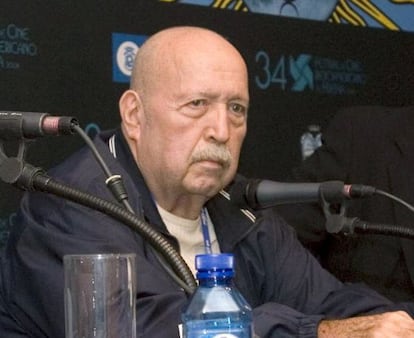Cuban film great Camilo Vives passes away at age of 71
Producer was behind classics of post-revolutionary cinema

For four decades, movie producer Camilo Vives, who has died in Havana at the age of 71, was associated with some of the sharpest and most emblematic works of Cuban cinema — from Humberto Solás’s Lucía in the 1960s and Tomás Gutiérrez Alea, to Juan Carlos Tabío’s Strawberry and Chocolate in the 1990s and Fernando Pérez’s Suite Habanain the last decade.
What’s more, Vives was at the forefront of most of Cuba’s coproductions with Spain, as well as with other European and Latin American countries after the disintegration of the Soviet bloc, when the finances of the country’s film industry were disappearing and production fell from around 10 films a year to two or three, if that.
Vives was, without a doubt, the great producer of the Cuban Institute of Cinematographic Art and Industry (ICAIC), the organization that propelled film production on the island in the years after the revolution and favored the integration of filmmakers across the region via the International Festival of New Latin American Cinema and its associated foundation, which was created in 1985 with the support of writer Gabriel García Márquez.
Over his long career Vives worked on more than 130 features and film series, including key works by Gutiérrez Alea, such as The Last Supper (1976), Tabío’s most famous comedies and some of Solás’s final, more critical works, such as Barrio Cuba (2006) and Miel para Oshun (2001).
Digging up resources
[/EMPTYTAG]Vives also worked as a teacher at the Havana Higher Institute of Art and headed up the board of the Federation of Ibero-American Film and Audiovisual Producers.
In particular, he was an expert at digging up resources where none seemed available. In 2001 he was put in charge of the international production unit of the ICAIC and devoted his time to finding projects and partners to help set up coproductions, as well as contracting services for foreign producers on the island — a way of financing homegrown projects in those times of crisis.
Dating from this era are his collaborations with Spanish producers such as Gerardo Herrero, with whom he made Guantanamera (1995), directed by Alea and Tabío, as well as El misterio Galíndez (2003), directed by Herrero himself, and Tabío’s Aunque estés lejos (2003) and El cuerno de la abundancia (2008).
He also worked with Manuel Gutiérrez Aragón on Una rosa de Francia (2006) and on a series about the history of Cuban music for Spanish state television network TVE.
In the middle of the last decade, when ICAIC lost its monopoly on film production and filmmakers — above all the youngest ones — started to finance their own films, Vives supported the privatization of the industry.
When he died on March 13, he was busy working as an independent producer on La pared de las palabras, the latest film from director Fernando Pérez, with whom he had also made the Goya Award-winning Life is to Whistle in 1999.
Tu suscripción se está usando en otro dispositivo
¿Quieres añadir otro usuario a tu suscripción?
Si continúas leyendo en este dispositivo, no se podrá leer en el otro.
FlechaTu suscripción se está usando en otro dispositivo y solo puedes acceder a EL PAÍS desde un dispositivo a la vez.
Si quieres compartir tu cuenta, cambia tu suscripción a la modalidad Premium, así podrás añadir otro usuario. Cada uno accederá con su propia cuenta de email, lo que os permitirá personalizar vuestra experiencia en EL PAÍS.
¿Tienes una suscripción de empresa? Accede aquí para contratar más cuentas.
En el caso de no saber quién está usando tu cuenta, te recomendamos cambiar tu contraseña aquí.
Si decides continuar compartiendo tu cuenta, este mensaje se mostrará en tu dispositivo y en el de la otra persona que está usando tu cuenta de forma indefinida, afectando a tu experiencia de lectura. Puedes consultar aquí los términos y condiciones de la suscripción digital.
Últimas noticias
From digital curfews to blocking apps: How technology experts protect their children online
Why the price of coffee has skyrocketed: from Brazilian plantations to specialty coffee houses
Confined to a Cuban hospital: When electricity is a matter of life or death
The complicated life of Francesca Albanese: A rising figure in Italy but barred from every bank by Trump’s sanctions
Most viewed
- Why we lost the habit of sleeping in two segments and how that changed our sense of time
- Pablo Escobar’s hippos: A serious environmental problem, 40 years on
- Trump’s obsession with putting his name on everything is unprecedented in the United States
- The Florida Keys tourist paradise is besieged by immigration agents: ‘We’ve never seen anything like this’
- Charles Dubouloz, mountaineering star, retires at 36 with a farewell tour inspired by Walter Bonatti








































